Music’s tech nightmare: Part 1 – The quiet storm
The fact that we take all these inventions of that time for granted shows how remarkable it was that for our contemporaries 100 years ago, all these marvels had come out of nowhere to become normal and ordinary in their lifetimes.
We’re talking cars, aeroplanes, telephones, radio, movies, all manner of home appliances and, of course, sound recording. Cars were in no way a better version of horse powered transport. Movies weren’t photography 2.0. No, these were all transformational technologies that grew into mass market propositions in no time at all. They combined cutting edge scientific and technical knowledge with the latest, modern sources of energy and power at the time: oil and electricity.
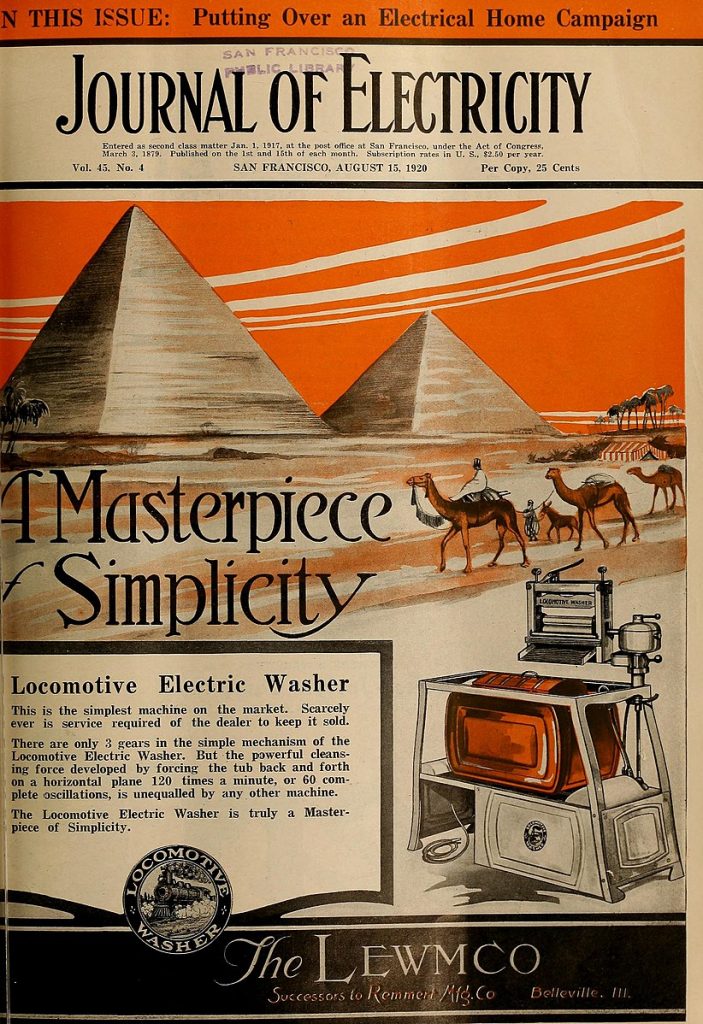
However there was one striking exception to this story of progress and change. There was one area of innovation where technological change had ground to a halt.
In a world of constant disruption and technological development, sound recording had become the poor relation. Unlike its peers such as radio or movies, recording was stuck in the distinctly low fi and low tech world of acoustic recording and clockwork motors.
This was not good. No, this was very very bad.
If you’ve never heard a voice or any other sound recorded before, then its very existence is a marvel. An astonishing and novel achievement. The first time. But after that, the novelty wears off very quickly.
That’s not unique to recording of course. The earliest audiences for motion pictures were apparently terrified by the sight of a train moving towards them. But having seen it once and understood that no harm will come to you, you’re going to need more and better to bring you back again. The earliest movie producers got this memo very quickly and almost immediately were experimenting with different forms including drama, spectacle and visual effects.
The forerunners of EMI, Columbia Phonograph and The Gramophone Company, had from their very beginnings at the end of the 19th century also been constantly experimenting with different types of audio and music, led by the genius of Fred Gaisberg, the most influential producer and talent scout of the early recording industry.
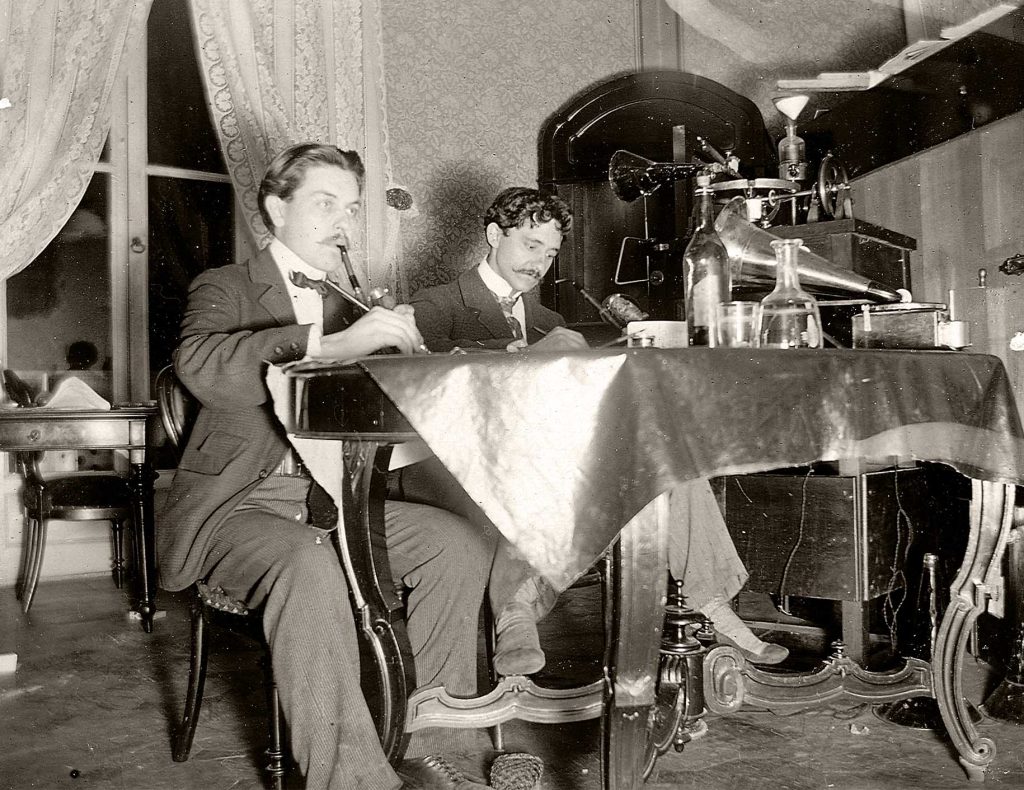
Fred Gaisberg with his brother Will – they can’t believe they get to do this for a living either
But once the concept of recorded sound was no longer the shiny new kid on the entertainment block, there was no getting around the very serious quality issues the industry faced.
The horrible reality was that there were inherent shortcomings in both the recording and playback processes. The whole system was flawed and not fit for the modern age of the 1920s.
For a start everything had to be loud, really loud, to create a usable groove on the record. Subtle performances of soft string instruments or gentle vocal arrangements was definitely out. In was loud voices, the most capable at the time being popular music hall singers and opera performers, accompanied only by instruments that could really make their mark, such as pianos, trumpets, tubas, clarinets and other wind instruments.
All the sound had to be captured by a single recording horn attached to the stylus, necessitating musicians and singers crowding together to make sure their contribution was captured by the horn. It wasn’t a particularly enjoyable experience.
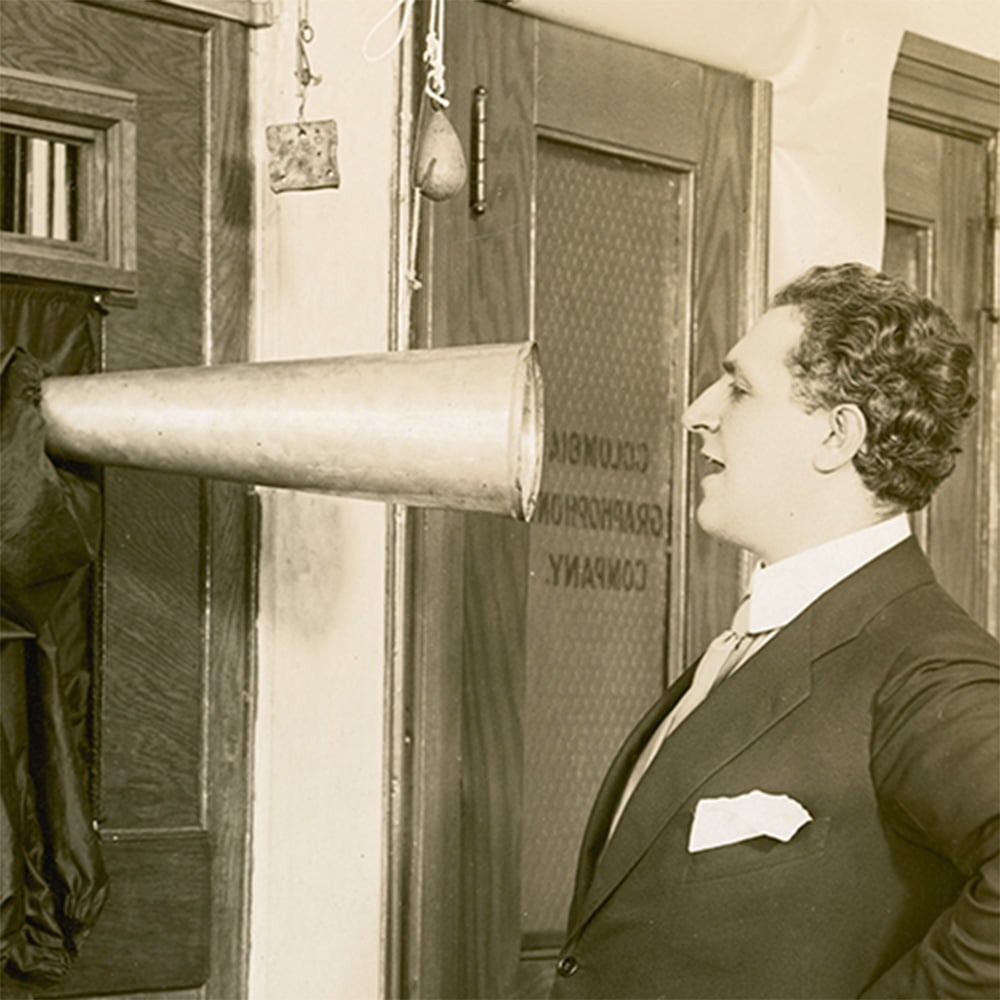
Sounding great but LOUDER PLEASE
And then even when you had the best recording you could get with the technology of the day, when played back the whole thing was still decidedly on the quiet side.
The awful truth was that as the 1920s unfolded recorded music was not in any position to keep consumers coming back year after year when the competition for people’s leisure time and money was the likes of cinema and radio which were making rapid technological progress.
The problem, quite simply, was electricity, or rather, when it came to recorded music, the complete lack of it.
It definitely wasn’t a case of the leading lights of recording having some romantic attachment to some questionable ideas of acoustic authenticity, of not understanding the wonder tech that was electricity.
No the three most consequential people in the development of recording technology in its earliest days at the end of the nineteenth century, Emil Berliner, Alexander Graham Bell and Thomas Edison, had all developed electrical audio devices before their interest was drawn to sound recording. Yet despite the expertise of them and their peers when it came to electronics, recording remained an electricity-free zone for decades. Why?
The problem was amplification in both the recording and playback processes. Telephones, for example, worked via an electrical microphone, and it was perfectly feasible to use one when making a recording. But the resulting record would have been much much quieter than one produced by simply shouting into the horn. So as long as this discrepancy continued, the shouting method of recording continued to be best of the bad options available.
To get this far, the industry been driven by those singers and performers who could get around the lack of amplification. Gaisberg himself would later explain that he had chosen the records he put out very carefully to, as he put it, “obtain the most brilliant results without revealing the defects of the machine.”
What this meant in practice was that the most effective musical instrument was the human voice, or rather some types of human voices. In particular male and female operatic voices, as exemplified by two of the biggest recording artists of those early years, Nellie Melba and Enrico Caruso. Both incidentally persuaded to make recordings by Gaisberg which were produced and engineered by Gaisberg himself.
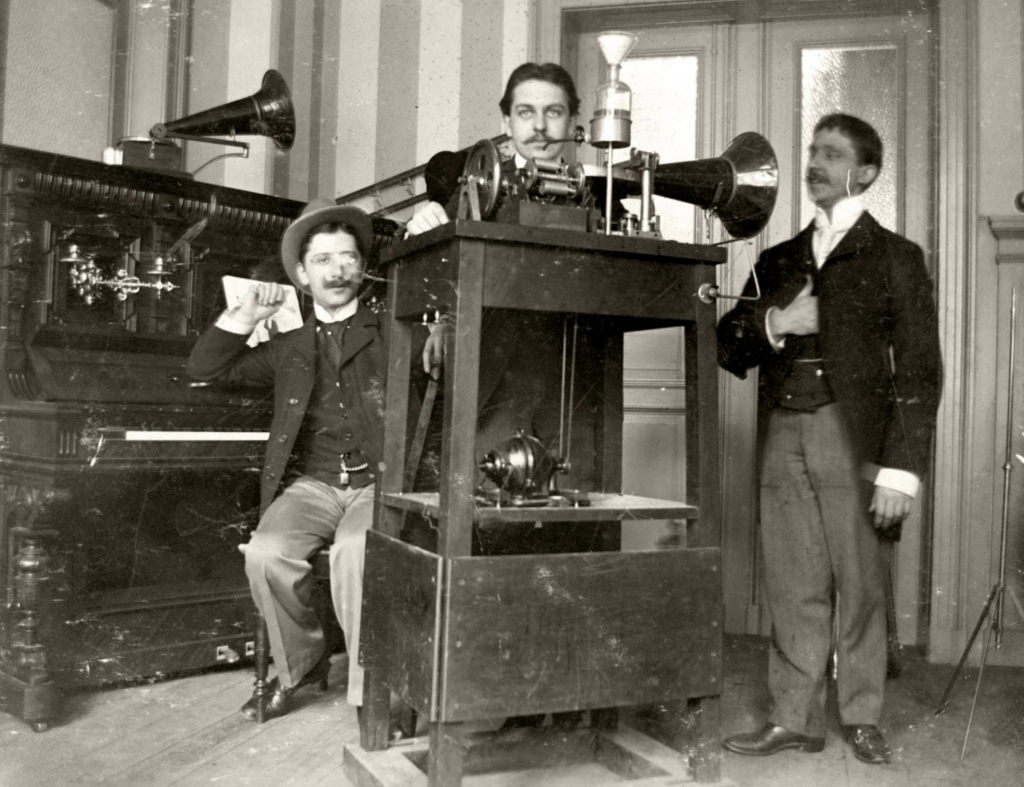
Another day in the office for Fred Gaisburg
After voices the next most effective sound to record came from military bands because of their combinations of brass, wind and percussion instruments. Which is why if you look at early catalogues of The Gramophone Company, there are so many records by military bands, sometimes up to a third of their available releases.
String instruments were almost impossible to translate to a gramophone recording in their normal form. Violin pieces were recorded on something called a ‘stroh violin’ which was a violin-like contraption enhanced, if that’s the right word, with a metal resonator and a built in horn to amplify the sound. Bassoons took the place of cellos, and double basses were substituted for tubas.
If all that wasn’t enough handicapping, in the US, the birthplace of recording technology, far from being a runaway commercial success, the early days of the record industry was a catalogue of one commercial disaster after another. For years the only constant in the American record business was collapse and bankruptcy which was hardly ideal for building a dynamic and innovative industry.
Fortunately for EMI, in an uncharacteristic moment of stability, at the end of the 1890s, both The Berliner Gramophone Company and Columbia Phonograph set up European subsidiaries. These two companies were the forerunners of EMI and compared to their American parent companies were islands of stability. And it was Columbia in particular that was going to seize the initiative to put the record industry on a secure long term footing. For a start by fixing these serious audio quality and shouting-based recording problems.
The man who was going to sort this all out was Louis Sterling. Born in New York and showing his entrepreneurial chops early on as a highly successful childhood newspaper seller, in his mid-20s he was enticed over to London in 1903 to join the newly established London arm of Berliner’s empire, The Gramophone Company, by its managing director and fellow New Yorker William Barry Owen.
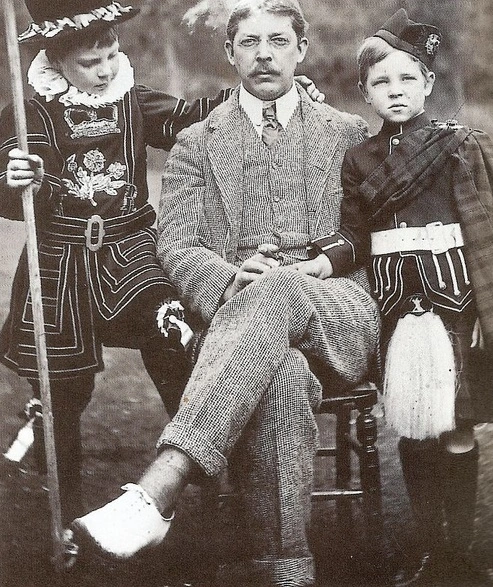
William Barry Owen and sons – you couldn’t refuse a job offer from this man either
